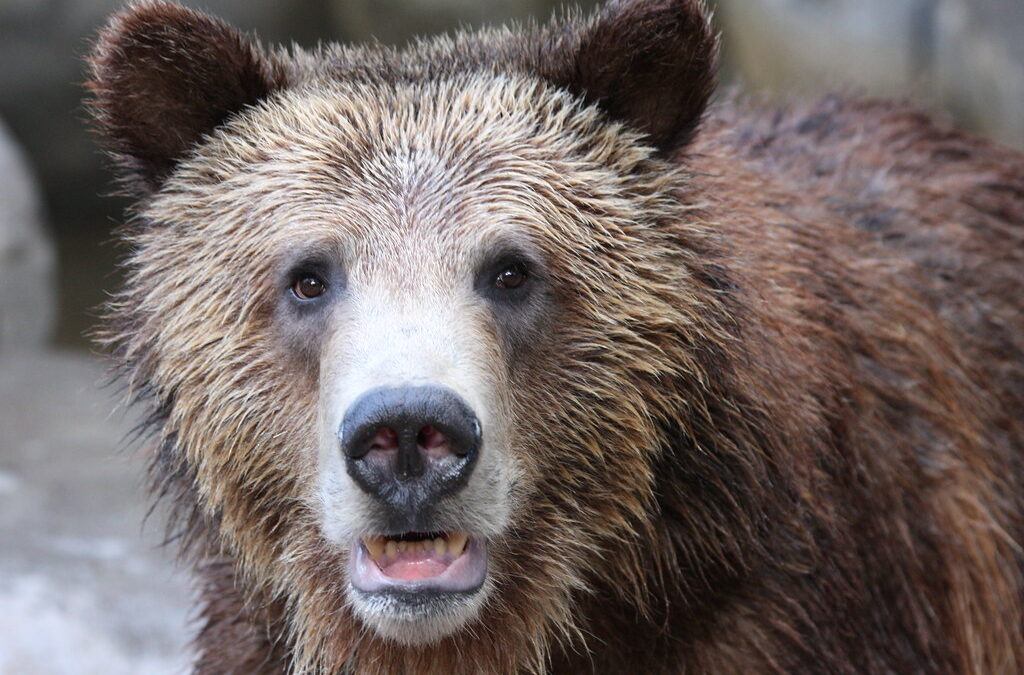Montana’s Paradise Valley is aptly named, sitting between two towering mountain ranges, it cradles the mighty Yellowstone River that flows from its headwaters in America’s first national park and provides critical habitat to the native species still present 200 years after Lewis and Clark’s expedition.
Yet, the Forest Service decided to expand cattle grazing on six allotments on the valley’s east side, including in a grizzly bear recovery zone. It is a formula for destruction of native vegetation, sedimentation in cutthroat spawning streams, and dead wolves and bears – which is why Western Environmental Law Center is representing the Alliance, Native Ecosystems Council, Western Watersheds Project and other wildlife and ecosystem protection groups in a lawsuit in federal district court in Montana on September 12th to challenge the agency’s decision.
In addition to several of the allotments’ located in the grizzly bear’s “recovery zone,” the agency also expanded the area and lengthened the grazing season, putting the bears at increased risk of being killed in response to foreseeable conflict with private, for-profit cattle operations. Our lawsuit also names the U.S. Fish and Wildlife Service as a defendant because the agency is supposed to be protecting endangered and recovering species but used out-of-date scientific information and failed to adequately consider the impacts of the grazing decision on grizzly bears in the Lower 48 states.
The six grazing allotments lie just north of the border of Yellowstone National Park and encompass a portion of the Absaroka-Beartooth Wilderness, within an important habitat connectivity zone. Increased grizzly bear mortality in this area on the edge of the Greater Yellowstone Ecosystem will not only slow grizzly bear range expansion, it will also keep the Yellowstone grizzly bear population genetically isolated, leading to irreversible inbreeding.
Providing secure travel corridors between the Yellowstone ecosystem to the Northern Continental Divide ecosystem is essential to grizzly bear recovery. The Forest Service’s decision puts private cattle on the public’s national forest one month earlier in the spring when calves are still very small and tempting targets for hungry grizzlies starving for food after waking up from a long winter nap.
The Forest Service based their analysis on the 1998 baseline population data when there were few grizzly bears north of Yellowstone National Park and before climate change decimated whitebark pines, the nuts of which have historically been the grizzlies’ primary food source. Illegally introduced lake trout likewise decimated Yellowstone’s once abundant native cutthroat trout, which provided a high-protein food source for the bears but today are threatened with extinction.
This is not 1998, it is 2022. A quarter century later, Yellowstone grizzlies expanded their range in search of food to replace whitebark pine nuts and Yellowstone cutthroat throat. Therefore, more grizzlies are living in the Montana portion of the Greater Yellowstone Ecosystem, including in the vast Absaroka-Beartooth Wilderness Area where some of the grazing allocations are located. It is imperative that the Forest Service analyze the impact of the grazing decision on the current conditions grizzlies bears face today. Failing to do so will result in the government and private ranchers killing far too many grizzly bears every year.
Scientists estimate 46,500 -72,200 grizzly bears ranged over a million square miles of the West when European settlers showed up more than two centuries ago. Today about 1550 grizzly bears occupy only 3% of their former range in five demographically isolated populations in the Northern Rockies that face threats of inbreeding.
Grizzly bears were listed as “threatened” in the lower 48 states under the Endangered Species Act in 1975 – nearly a half-century ago. The Endangered Species Act exists for one reason: to protect and recover threatened and endangered species until they are no longer vulnerable to current and foreseeable threats.
One of the major hurdles for grizzly bear recovery is to have one connected, genetically sound population – not five isolated inbred populations. Due to the physical disconnect from other populations, the Yellowstone grizzlies remain vulnerable to inbreeding and continue to require the legal protections of the Endangered Species Act.
As the range of grizzlies expands, the most promising corridor for reconnecting Yellowstone’s bears with other populations is the area including and surrounding the Beartooth-Absaroka Wilderness Area on Yellowstone National Park’s northern border.
In the Greater Yellowstone Ecosystem, Fish and Wildlife report that from 1980 to 2001 of the 191 total grizzly mortalities, 82% or 156 were human-caused mortalities. Of these 156 killed grizzlies, nine bears were killed to protect livestock interests.
From 2002 to 2020, however, the numbers jumped significantly. Of the 563 grizzlies that died 86% or 483 were killed by humans. Of these 483 grizzlies killed by people, 122 bears were killed to protect livestock – more than one in four! In Wyoming’s Upper Green River grazing allotments on the south side of Yellowstone, the Fish and Wildlife Services recently authorized killing 72 grizzly bears over 10 years to protect cattle.
We need help to do everything possible to attain safe travel corridors and the highest level of security for grizzly bears instead of putting them at risk for being killed because the Forest Service is putting more privately owned cattle, many of which are owned by billionaires, in grizzly bear recovery zones on a national forest owned by all Americans.
Mike Garrity is the executive director of the Alliance for the Wild Rockies.
